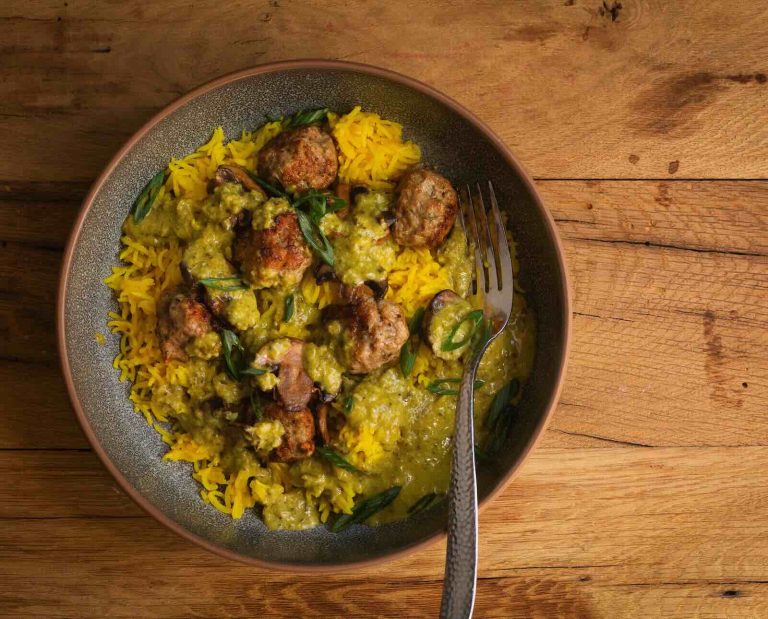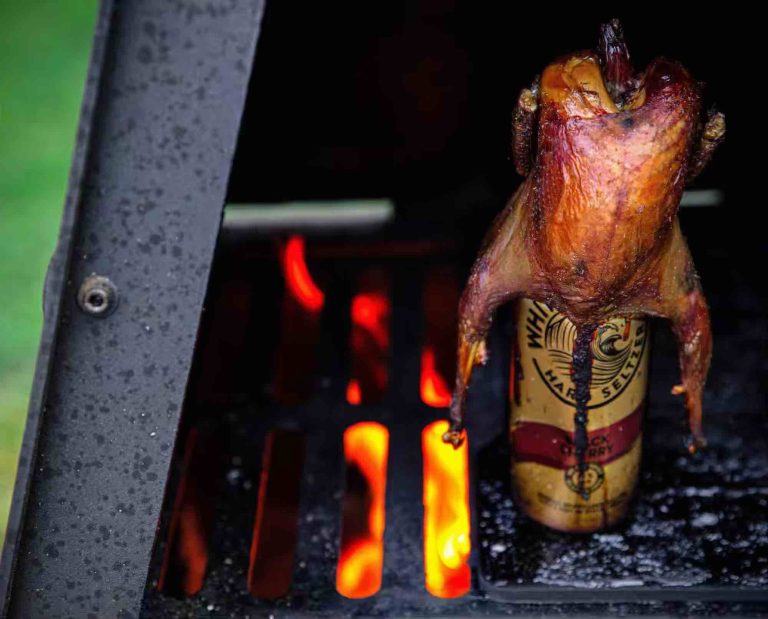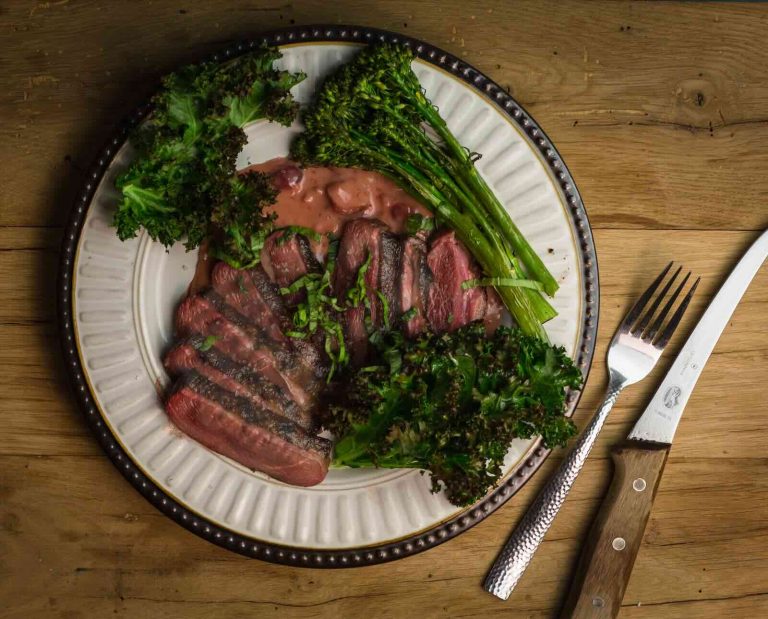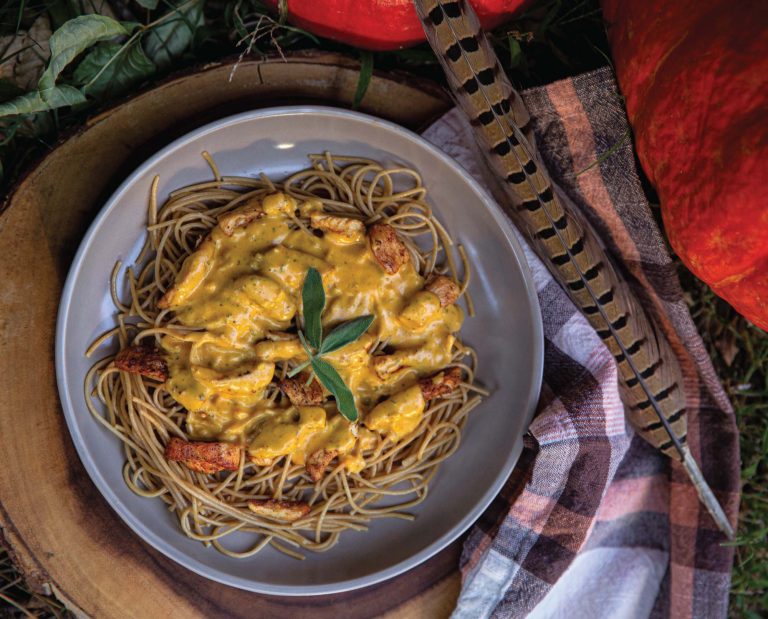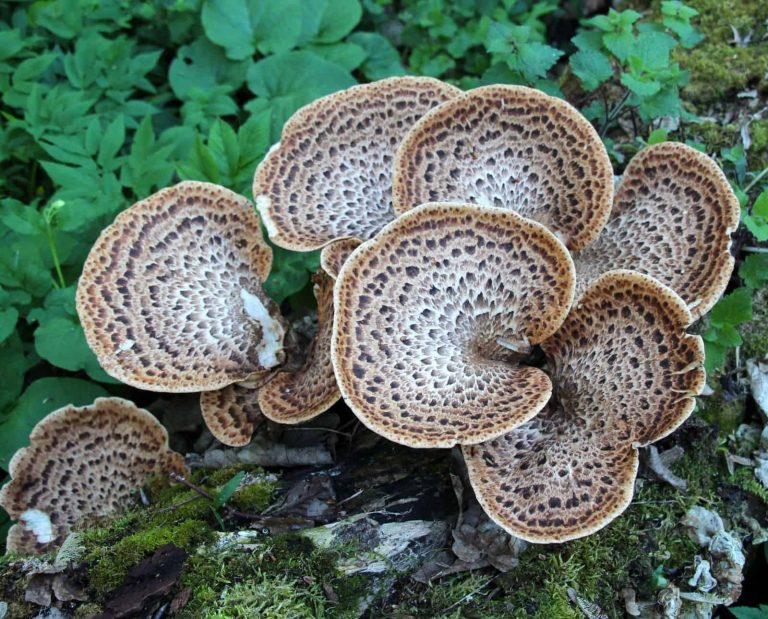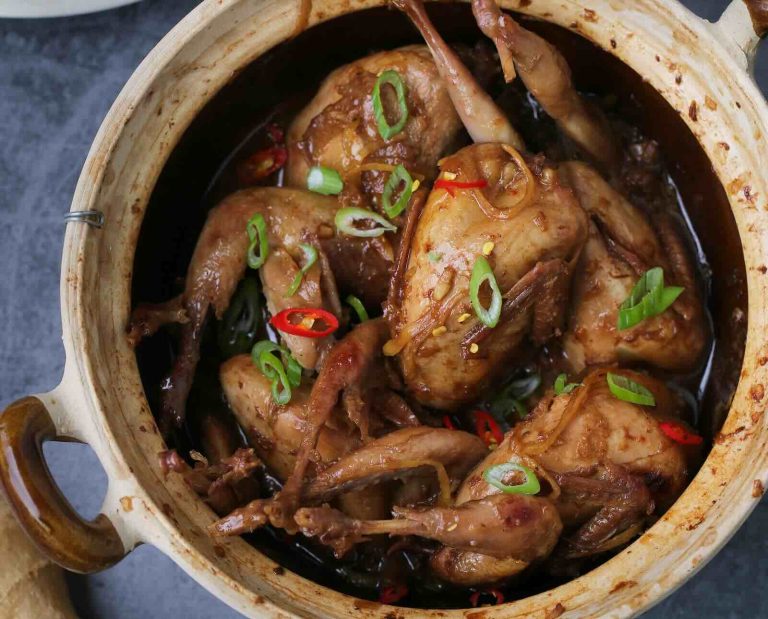Simple Saffron Milk Cap Fricassee
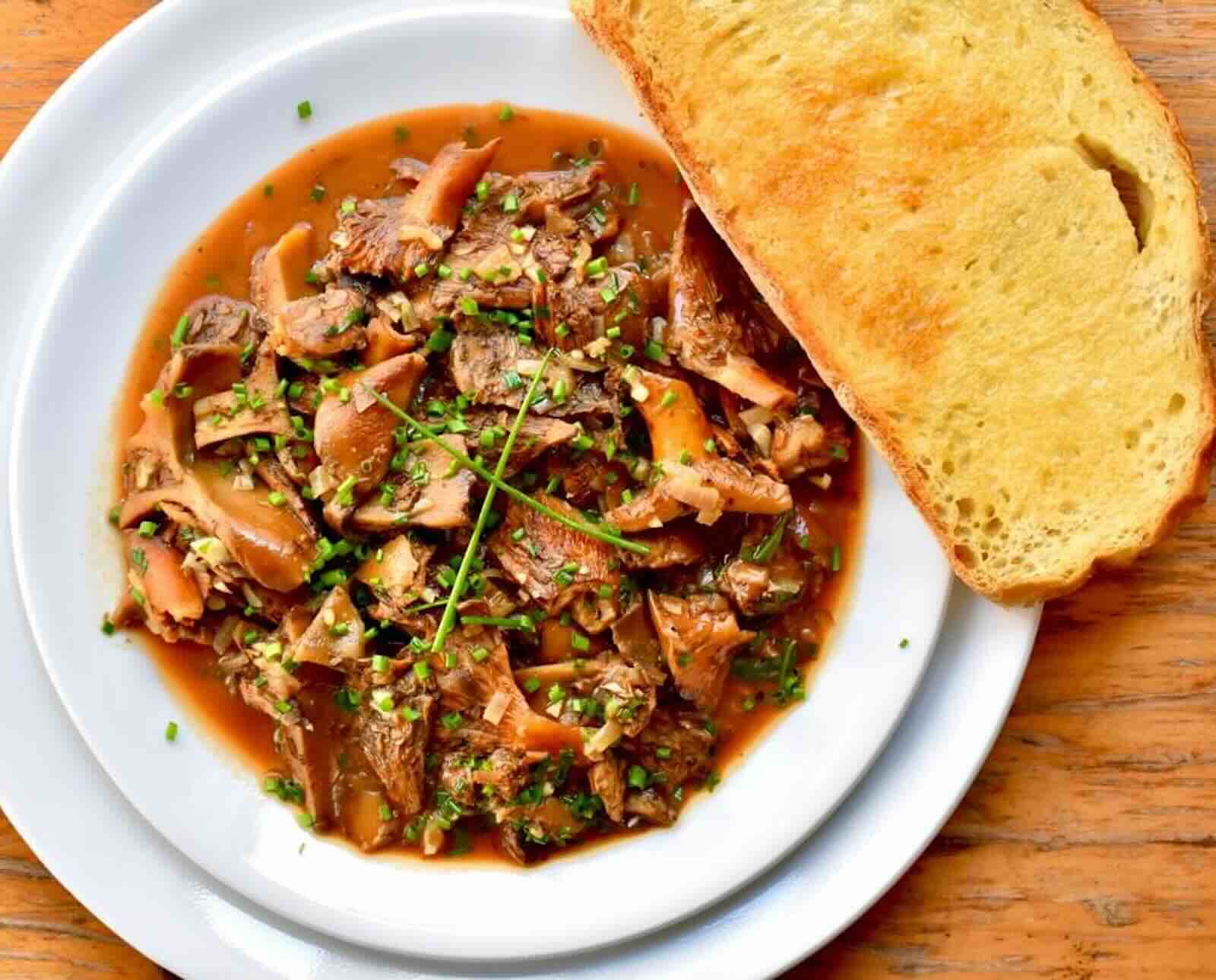
This classic technique brings out the best in foraged mushrooms for a simple but delicious meal
Fricassee is one of those old-school French techniques that bridges the gap between sautéing and stewing. It’s not quite one, not quite the other. The word itself likely stems from the combination of two French words: frire (to fry) and casser (to break), describing a process where meat is first browned lightly, then braised gently in a flavorful liquid until tender. Classic French versions often call for veal, chicken, or rabbit and finish the sauce with cream, egg yolks, or both. This creates a pale, rich, and comforting dish. Unlike a heavy stew, a fricassee is lighter, more delicate, and more nuanced. It’s what you make when you want to treat rustic ingredients with elegance.
This technique goes all the way back to the Middle Ages and has roots not just in France but across much of Europe. English cookbooks from the 16th and 17th centuries feature variations of the dish, often under odd spellings like “fricasy” or “fricace.” These early preparations were surprisingly close to the modern method: meat cut into small pieces, cooked gently in a mixture of broth, herbs, and sometimes wine or vinegar, then thickened at the end. Over time, the dish spread and evolved, showing up in kitchens from Spain to Sweden. It even crossed the Atlantic, taking root in the American South, where chicken fricassee became a beloved comfort food, thickened with roux or cream and served over biscuits.
What I love about fricassee is how adaptable it is. It respects the character of whatever ingredient you use; in this case, wild saffron milkcap mushrooms rather than meat. It’s one of the best vehicles I know for cooking wild mushrooms, other than a simple sauté with butter and garlic. They meld right into the pan sauce, while maintaining much of their own texture and depth.
Milk Cap Mushroom Identification And Habitat
The saffron milkcap (Lactarius deliciosus) is a striking fungus, both in appearance and name. Once you see one, it’s hard to forget. The caps are bright orange, often with subtle concentric circles on the surface. The gills underneath are a paler orange and bruise green when handled or cut. Slice into one, and a vivid orange latex oozes out; this “milk” is where the mushroom gets its name, and it’s one of the key identifying features.
You can usually find saffron milkcaps in late summer through early fall, growing under pine trees, especially in sandy soil. They love coniferous forests and often pop up in the same places year after year if the conditions are right. I often find them while walking through red pine plantations or along forest edges where the duff is thick but not too wet. When the light hits them right, they almost glow through the pine needles.
Of course, as with all wild mushrooms, positive identification is key. Thankfully, saffron milkcaps are fairly distinctive. That bright orange color, the carrot-colored milk, the green bruising on the gills… put those together with the pine habitat and you’ve got a pretty reliable ID. Still, you should always cross-reference with a field guide and a few websites, and if you’re unsure, don’t eat it. There are other milkcaps out there, some of which are inedible or mildly toxic, but few have that same vivid saffron color and combination of features.
Milk Cap Mushroom Flavor, Texture, And Cooking Methods
In terms of flavor, saffron milkcaps are mild, mushroomy, nutty, and a bit fruity; nothing overpowering, but definitely present. Their Latin name, deliciosus, is no lie! They hold their texture well when cooked and do best when sautéed slowly to bring out their sweetness.
In Eastern Europe, where they’ve long been prized, you can usually find them pickled or preserved in oil. In Spain, they are often grilled whole or cooked in garlic and olive oil. They don’t melt away like chanterelles or collapse like morels; they stay firm, providing little bites of forest flavor throughout the dish.
Whether you’re a forager, a hunter, or just someone looking to cook a little closer to the land, fricassee is a perfect place to start. It’s not flashy or trendy, but it’s deeply satisfying, endlessly flexible, and forgiving in the best way. And when you start folding in wild flavors like mushrooms, small game, or upland birds, it becomes something truly special!
NOTE: I used orange wine to make this dish since it just seemed to want to be paired with the orange mushrooms, but feel free to use any white wine if orange isn’t available.
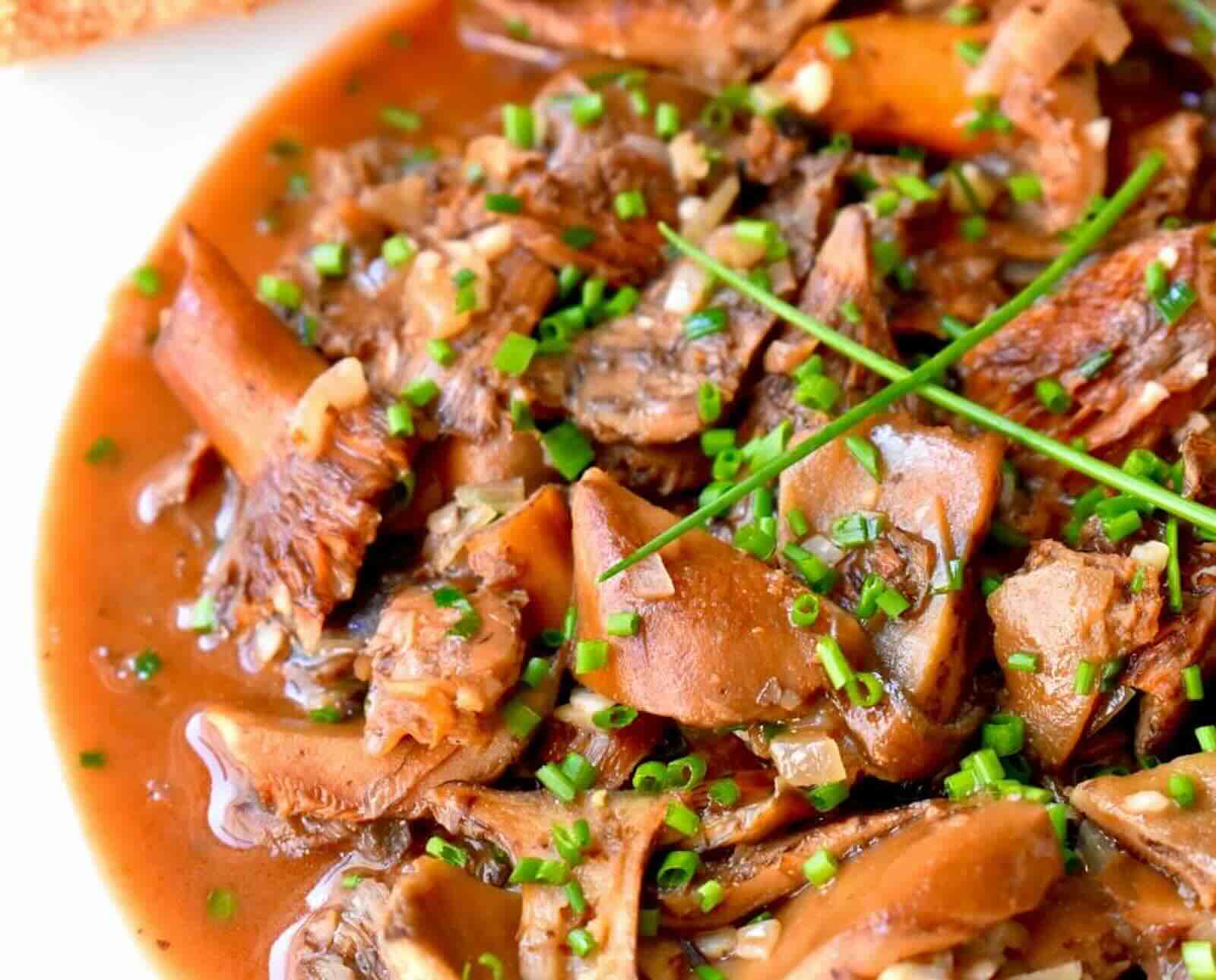
Ingredients
Method
- Heat oil and 1 tablespoon of the butter over high heat in a steel or cast-iron pan. Add mushrooms and sauté for 5 minutes.
- Lower the heat to medium-high and add the shallots and garlic. Cook for another 3-5 minutes, or until the liquid has all dissipated from the mushrooms.
- Add the wine and scrape the pan. Once the liquid has dissipated, add the stock, a pinch of salt and pepper, and reduce the heat to medium. Let simmer until a thick sauce has formed. Add the other tablespoon of butter and 3/4 of the herbs. Take off the heat. Taste for seasoning and add salt as needed.
- Serve, garnished with the rest of the herbs, with toasted and buttered sourdough, on rice or noodles, or under poultry breasts or pork tenderloin medallions. Enjoy!



